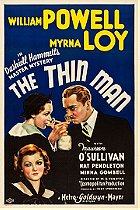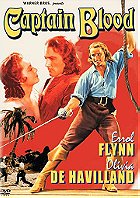Posted : 10 years, 5 months ago on 31 January 2015 06:23
(A review of
*** This review contains spoilers ***
Few other cinematic experiences are as immensely satisfying as MGM’s 1935 production of Mutiny on the Bounty. Loosely based on the mutiny on board the HMS Bounty in the South Pacific on April 28th, 1789 (although at the end of the day how can any of us really know what happened on board that vessel over 200 years ago), the actual build-up to the seizing of the ship is just gloriously immense.
Charles Laughton is an absolute beast as Captain William Bligh, a cruel sadist, and a tyrant with no reverence for the convicts and low lives in his crew. With his arrogant stance, a face like a dead fish and his bushy eyebrows, it’s hard to stress just how much I love this performance; shivers go down my back at any of his many outbursts (“Miiiister Chriiiiiistian!”). For me, this is the ultimate love to hate character that when he finally gets his comeuppance after subjecting his crew to overworking, lashings and other mistreatments (which even go as far as leading to the death of some shipmen), it’s one of the most satisfying movie moments ever. Just like the crew, you grow to hate the Napoleon-complexed bully with a passion. On a personal level, I can see many of my old school teachers in Bligh. Ok, they weren’t that sadist but his harsh nature gives me déjà vu of my school days. There’s just something about angry, tyrannical ship captains which make for such memorable storytelling trope (Captain Ahab, Captain Queeg, James Cagney in Mister Roberts, Edward G. Robinson in The Sea Wolf).
Laughton’s performance as Bligh is not merely a caricature, however. Bligh is shown to have a human side which is expressively shown with the friendship he shares with the King of Thatti, Hitihiti (Bill Bambridge) - the only person who can convince Bligh to be less harsh with his crew and take a more liberal attitude. We don’t know why Bligh is the way is he, but it’s clear he’s very selective with whom he shows his respect and loyalties too. Whenever Bligh is on the lifeboat away from the convicts and lower dregs of society following the mutiny and only surrounded by his most loyal officers, suddenly he’s a great morale booster and a competent captain.
Second billed after Laughton is The King of Hollywood himself: Clark Gable as Fletcher Christian - A figure you would be glad to have as a captain, stern but fair and a man you would happily salute and shout “yes sir!”. He’s the humanitarian saving grace for a crew ravaged at the hands of Captain Bligh. Like Laughton, the hairs on my back rise at any of his outbursts throughout the film (“I call ship’s company to bare witness, you killed him!”). Supposedly the two actors intensely disliked each other possibly due in part to Gable winning the Oscar for Best Actor the year before for It Happened One Night over Laughton’s performance in The Barretts of Wimpole Street. This makes the seething hatred between the two characters feels more real making Mutiny on the Bounty a movie of two powerhouse performances fighting for dominance of the screen. This was Gable’s first role in a historical film and he fits well into the period even with his apparel of knee breeches probably being the most effete thing he’s ever worn on screen and his lack of an English accent (but ultimately this never gets in the way). It’s just a shame Gable would never again do an adventure role in the vein of Mutiny on the Bounty.
The complexity of Fletcher Christian comes from whether the character can be classified as a hero or a coward for his enacting of a mutiny. Christian could have tried to keep the crew’s lives as bearable as possible until they returned to England. On the other hand Bligh, on top of being tyrannical and corrupt, is responsible for the death of crew members. Was Christian justified in his action? It’s a question which the movie has no clear answer for (”From now on, they’ll spell mutiny with my name. I regret that, but not the taking of the ship. Every time think of Bligh, well I’d do it again”). When the mutineers celebrate the taking of the ship, Christian doesn’t part take in their exuberance and has a look of confliction on his face. For the mutineers they had noting waiting for them back in England, Christian, on the other hand, is throwing away his navel career, became a criminal and betrayed the crown in the process.
This question of whether a mutiny can be justified is also notably examined in Herman’s Wouk’s novel and subsequent film adaptation The Caine Mutiny, and there are quite a few plot threads connecting these two films together. In Mutiny on the Bounty Midshipman Byam sees a tall ship and asks if it is the Bounty, only to be disappointed when he’s directed to a much smaller ship; likewise Ensign Keith in The Caine Mutiny spots a new vessel and asks if it is the Caine, only to be directed to a rusty old minesweeper. In Mutiny on the Bounty, Bligh obsesses over two wheels of missing cheese, in The Caine Mutiny, Captain Queeg turns his ship upside down over a quart of missing strawberries. On top of this, both Bligh and Queeg are highly untrusting of their crews, even going as far as to draw up conspiracy theories based on half-heard and innocent conversations. I have to ask if Herman Wouk took inspiration from Mutiny on the Bounty when writing his own novel.
Rounding out the crew of The Bounty is a fine cast of players. I’ve never thought much of Franchot Tone as an actor (or at the very least didn’t get many meaty roles) but he’s superb as Midshipman Roger Byam, an idealist seaman who has to make difficult decisions between his loyalty to the navy and tyranny of Captain Bligh with his final monologue being one of the movie’s many acting highlights. Other character actor highlights include the drunken Dudley Diggs, the easily frightened Herbert Mundin as well as Eddie Quillan and Donald Crisp, who have small but very memorable and striking parts.
The scenes on the island of Tahiti are a major contribution to the pure escapism in Mutiny on the Bounty. Filmed on location on the real-life island itself, this portion of the film is as romantic as it gets. Tahati seems like a world too good to be true; a tropical drug shop of feast, song, and sleep; a seemingly carefree society in which the inhabitants don’t even know about the concept of money. It’s such a release after the tyranny experienced onboard The Bounty, well until we have to return to the ship that is - no wonder a mutiny takes place. Even with the production code in effect, the scenes on the island are still very exotic (even with the women’s navels being covered up with makeup) and it’s defiantly implied that intercourse has taken place. Shirtless Clark Gable, beautiful exotic women, tropical island paradise, what more do you want?
Mutiny on the Bounty also pushes forth a positive representation of the much-vilified British Empire with its patriotic overtones and the portrayal of the Empire having exceedingly good relations with a Polynesian tribe. Even with the appearance of a tyrannical and corrupt ship captain and his associates, the film indicates Bligh is an exception to the British Navy rather than the norm. Likewise, the film states in the opening prologue that the mutiny brought about reform to Britain’s navy:
“But this mutiny, famous in history and legend, helped bring about a new discipline, based upon mutual respect between officers and men, by which Britain’s sea power is maintained as security for all who pass upon the sea.”
The life-size recreation of The Bounty pushes the boundaries of set design at the time. From a visual standpoint, the movie excels in the realism department especially considering the lack of back-projection shooting. Likewise, the rousing musical score by Herbert Stothart unleashes the imagination of your inner schoolboy. Oh, and did I mention James Cagney is in this film; yep he’s in there for a brief second (just when I thought this movie couldn’t get any better). I find the tale of The Bounty is a story of great fascination and one which really sparks the imagination and the yearning for adventure. Mutiny on the Bounty is the seafaring movie all seafaring movies are measured against.
 Login
Login
 Home
Home 249 Lists
249 Lists 118 Reviews
118 Reviews Collections
Collections
 0 comments,
0 comments, 







